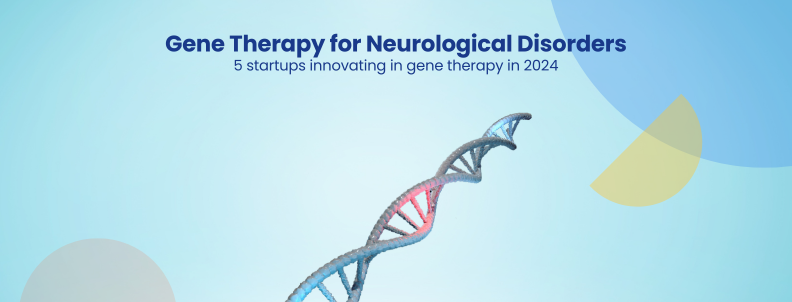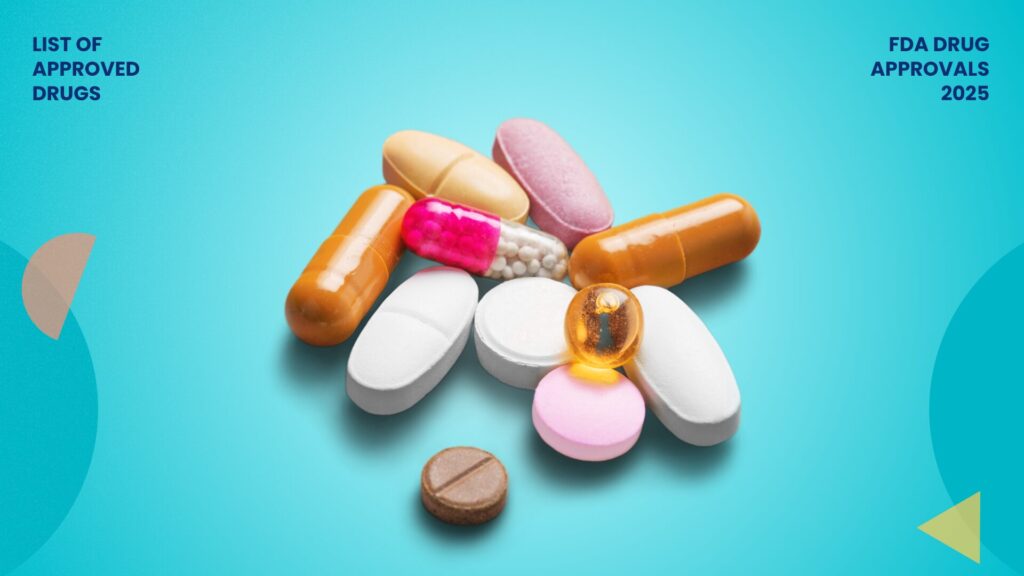Unlike traditional drug therapies, which often target proteins or enzymes, RNA-based treatments work by directly influencing the genetic material (RNA) in our cells. This enables precise control over gene expression, potentially correcting genetic defects or modulating disease-related processes at a molecular level.
One key type of RNA therapy is messenger RNA (mRNA) vaccines, which have been successfully utilized to combat diseases such as COVID-19.
Traditional vaccines often require growing the virus in labs, a time-consuming process involving isolation, inactivation, and culture.
In contrast, mRNA vaccines are designed quickly once the genetic sequence of the target virus is known. Scientists can then create the mRNA that encodes the virus’s protein (such as the COVID-19 spike protein), which triggers an immune response, without the need to cultivate the virus itself.
These therapies can be developed more quickly than traditional vaccines and have potential for broader applications, including treating diseases such as Huntington’s disease and certain types of cancer.
The scalability and flexibility of mRNA technology further enhance its speed and adaptability.
Once the mRNA sequence is designed, it can be rapidly synthesized and adjusted if new virus variants emerge, ensuring quicker updates than traditional vaccines.
Additionally, mRNA vaccines do not require complex biological processes or adjuvants, making the production process more straightforward and cost-effective. This enables efficient mass production without the need for extensive facilities.
However, despite its numerous benefits, it presents a few challenges that hinder its widespread adoption.
What are the significant challenges in RNA therapies to become widespread?
Despite the significant progress in RNA therapies, there are still several major challenges that need to be addressed to realize their potential fully:
1. Delivery Challenges
- Problem: One of the biggest hurdles in RNA therapies is efficiently delivering the RNA molecules to the right cells in the body. RNA molecules are large, negatively charged, and can quickly degrade in the bloodstream, making it difficult for them to reach their target cells without being broken down.
- Current Solutions: Lipid nanoparticles (LNPs) have been successfully utilized to deliver mRNA vaccines; however, developing safe and effective delivery systems for a wide range of RNA therapies remains a significant challenge. Other delivery methods, such as viral vectors and polymer-based nanoparticles, are also being explored.
2. Stability and Degradation
- Problem: RNA is inherently unstable, especially in the bloodstream, and can degrade quickly. This instability poses challenges for both storage and administration. For instance, mRNA vaccines often require very low temperatures for storage.
- Current Solutions: Encapsulation of RNA in lipid nanoparticles or other delivery vehicles can help protect it from degradation. Additionally, chemical modifications to RNA molecules, such as modified nucleotides, can enhance their stability.
3. Immune Reactions
- Problem: RNA therapies can trigger immune responses, especially when introduced into the body for the first time. The immune system may recognize the RNA as foreign and mount an immune response, which could lead to inflammation or reduce the efficacy of the treatment.
- Current Solutions: RNA therapies can be modified to avoid detection by the immune system and minimize immune activation. However, finding the right balance between effectiveness and avoiding immune reactions is still a key challenge.
4. Targeting Precision
- Problem: For RNA therapies to be effective, they must reach the right cells or tissues and precisely target the desired genes or genetic sequences. Achieving this level of precision is particularly challenging in complex tissues or organs, such as the brain, liver, or muscle.
- Current Solutions: Researchers are developing more targeted delivery systems to treat neurological conditions, such as utilizing tissue-specific ligands or designing RNA therapies that can cross the blood-brain barrier. However, this remains an area of active research.
5. Manufacturing Scalability
- Problem: Producing RNA therapies in large quantities for widespread use remains a challenge, especially for newer therapies. The complexity of synthesizing and purifying RNA molecules and the need for specialized delivery systems, such as lipid nanoparticles, make scaling up production difficult.
- Current Solutions: The development of streamlined manufacturing processes and automation is helping to address this issue. However, scaling up production for RNA therapies at an affordable cost remains a challenge.
6. Cost and Accessibility
- Problem: RNA therapies, particularly mRNA vaccines, can be expensive to develop and produce. The specialized manufacturing processes, the need for cold-chain storage, and the relatively new nature of the technology contribute to high costs. This can limit accessibility, especially in low-income countries or for patients with rare diseases.
- Current Solutions: Efforts are underway to reduce the cost of RNA therapies through improved manufacturing processes, more efficient delivery systems, and increased competition in the field. However, widespread accessibility is still a long-term challenge.
7. Regulatory and Approval Processes
- Problem: Regulatory bodies, such as the FDA, are still developing clear guidelines for RNA therapies, particularly those for new indications or gene-editing applications. The long-term safety and efficacy data for RNA therapies are still being collected, and rigorous clinical trials are necessary to establish best practices for these therapies.
- Current Solutions: Regulatory agencies have expedited the approval of some RNA vaccines, such as COVID-19; however, comprehensive frameworks and standardized approval processes for RNA-based drugs are still being developed.
Innovative Gene Therapy Startups
The Grand Role of AI in Making RNA Therapies Widespread
Artificial intelligence (AI) is a game-changer in RNA therapies. Its ability to process large datasets, simulate molecular interactions, and predict outcomes is helping to solve the biggest hurdles facing RNA-based treatments. AI models can analyze vast amounts of data far more quickly than humans, enabling researchers to identify patterns, optimize RNA sequences, and predict how RNA will behave within the body.
AI in RNA Sequencing Optimization
Designing RNA sequences that effectively express proteins or target specific genes has long been time-consuming. Traditional methods often rely on trial and error, requiring years of research to identify the optimal sequence. AI accelerates this process by analyzing large amounts of genetic data, predicting which RNA sequences are most likely to succeed, and optimizing their stability and efficiency.
This approach reduces the need for extensive physical testing, thereby accelerating the development of RNA-based vaccines and therapies.
Studies have shown that AI-driven optimization can significantly reduce the time required to design stable and effective mRNA sequences, as observed in the development of vaccines.
AI Drug Delivery Systems
Another major hurdle is delivering RNA molecules to the correct cells. RNA is fragile and can degrade in the bloodstream, making targeted delivery a complex challenge.
AI aids in designing more efficient drug delivery systems by simulating the behavior of RNA molecules and predicting their interactions with delivery vehicles, such as lipid nanoparticles (LNPs) or viral vectors.
Researchers at institutions such as the Massachusetts Institute of Technology (MIT) have utilized artificial intelligence (AI) to design more effective lipid nanoparticles, thereby enhancing their stability and targeting efficiency. AI helps identify the most effective delivery methods for various RNA therapies, thereby making treatments more effective and facilitating their easier development.
AI for Targeting Precision
Furthermore, precision-targeting RNA therapies are crucial for treating diseases in hard-to-reach areas, such as the central nervous system, including the brain. Achieving accurate targeting is critical to avoid off-target effects and ensure therapeutic success.
AI helps by analyzing the molecular profile of tissues and predicting which RNA sequences will be most effective in specific areas. For example, AI can design RNA therapies that are more likely to cross the blood-brain barrier, a crucial step in treating neurological disorders.
IBM Watson Health, for instance, demonstrated how AI could identify potential gene targets for Alzheimer’s disease, showcasing its ability to predict how RNA therapies might address specific proteins in the brain.
AI in Manufacturing Optimization
Finally, scaling up RNA therapy production while maintaining quality and reducing costs is a significant challenge. Manufacturing RNA therapies involves complex processes that can be expensive and difficult to optimize. AI addresses this by monitoring RNA synthesis in real-time and adjusting parameters to improve efficiency.
Companies like Moderna already leverage AI to streamline production processes, anticipate potential issues, and expedite production. This helps reduce the costs associated with large-scale manufacturing, making RNA therapies more accessible.
Role of AI in Drug Discovery
Evidence of AI’s Impact
1. Moderna
During the development of the COVID-19 mRNA vaccine, Moderna leveraged AI to optimize the design of its mRNA sequence. The company utilized AI-driven algorithms to predict how various mRNA sequences would interact with the immune system, thereby accelerating the vaccine development process and enabling its rapid release.
According to Moderna’s CEO, AI played a key role in their vaccine’s rapid design and optimization, contributing to the ability to begin clinical trials just 63 days after the virus sequence was identified.
In collaboration with Merck, Moderna is leveraging artificial intelligence (AI) to enhance the development and manufacturing of mRNA-4157, an individualized neoantigen therapy (INT) for patients with high-risk melanoma. AI streamlines the design and manufacturing of individualized treatments, efficiently handling thousands of patient batches with precision and accuracy.
Their AI algorithms analyze sequencing data from tumor and blood samples, review their genetic mutations, and predict up to 34 neoantigens likely to trigger an immune response. The algorithm can learn over time by pairing clinical and immunogenicity data, improving its selection of the most clinically active neoantigens.
On the manufacturing side, Moderna’s Maestro digital solution coordinates all activities across clinical operations, manufacturing, quality assurance, and logistics, adjusting plans in real time to ensure timely dose delivery. This system is essential for increasing patient batches and synchronizing with clinical site schedules.
These advancements address industry challenges by simplifying complex drug design, optimizing manufacturing processes, and scaling production. They ultimately enable personalized mRNA-based cancer treatments tailored to each patient’s unique tumor mutations, thereby enhancing the efficacy and precision of cancer treatment.
Moderna also collaborated with OpenAI to create platforms like Dose ID GPT for their mRNA Vaccines, a pilot platform leveraging GPT for clinical data review and analysis. Dose ID integrates and visualizes large datasets, supporting clinical teams with customized visualizations and deep analysis.
It aids in dose selection, automates the verification of optimal vaccine doses, and generates informative charts, ensuring vaccine safety and optimization before late-stage clinical trials.
Within two months of the ChatGPT Enterprise adoption:
- Moderna had 750 GPTs across the company
- 40% of weekly active users created GPTs
- Each user has 120 ChatGPT Enterprise conversations per week on average
AI Drug Discovery Startups
2. Shape TX
Shape Therapeutics utilizes AI to develop new medicines that address the genetic causes of diseases. Their leading technology, called RNAfix, works by using special molecules known as guide RNAs to facilitate a natural process in the body that corrects errors in RNA. RNA acts as a messenger that helps cells produce proteins, but sometimes it contains errors that can lead to diseases. RNAfix helps correct these mistakes by guiding a specific tool in the body to modify the RNA correctly.
To ensure this process works effectively, Shape Therapeutics has developed a system that tests thousands of possible guide RNAs to identify the most suitable ones. They utilize AI to assist in finding the best guides and enhance the overall efficiency of the process. This helps them make the process more accurate and reduce unwanted effects.
RNAfix works particularly well for brain diseases like Rett syndrome, Parkinson’s, and Alzheimer’s. In early tests, it corrected RNA errors in animal brains with great success, and the effects lasted for months. Unlike other treatments, RNAfix does not alter the DNA itself, making it safer and reducing the risk of side effects.
Shape Therapeutics collaborates with major companies, such as Roche, to develop new treatments for these diseases. Their breakthrough technology and AI-powered approach pave the way for new therapies that could help people with various genetic diseases.
This innovative approach shows great promise for treating hard-to-treat diseases and is helping to shape the future of medicine. If you’re interested in exploring more about these technologies or start-ups in the field of RNA-based therapies, we’d be happy to assist.
AAVid™ Capsid Platform (in collaboration with Otsuka Pharmaceutical Co., Ltd.)
Shape Therapeutics has another AI-powered platform that delivers RNA-based treatments directly to the target site in the body, such as the brain, muscles, or liver. By carefully designing the delivery system, this platform ensures that treatments reach only the affected cells, thereby reducing side effects and improving effectiveness.
Shape utilizes AI to analyze large amounts of genetic data, enabling it to identify the most effective treatment targets and design the corresponding RNA molecules. This speeds up the process of creating treatments and makes them more personalized, tailored to each patient’s unique genetic needs.
Additionally, the platform features a system that enables the production of these RNA-based therapies in large quantities while maintaining their stability and effectiveness, thereby increasing their accessibility to a broader patient population.
Next Steps
The future of AI in RNA therapeutics holds tremendous promise, revolutionizing the treatment of genetic diseases. From personalized cancer vaccines to brain-targeted RNA editing, the promise is immense.
Yet, challenges like immune reactions, delivery barriers, and manufacturing scalability persist.
As AI grows smarter, its role will be critical in solving these hurdles, but the path isn’t linear.
At GreyB, we specialize in uncovering emerging solutions and technologies at the intersection of AI, biotech, and RNA therapeutics. Whether it’s spotting delivery innovations or decoding regulatory trends, our research helps biotech leaders stay ahead in this rapidly evolving landscape.
How Can We Help You?
We support industry-leading R&D and Innovation professionals through complex problems. Describe your challenge, and let us bring clarity and expertise.











